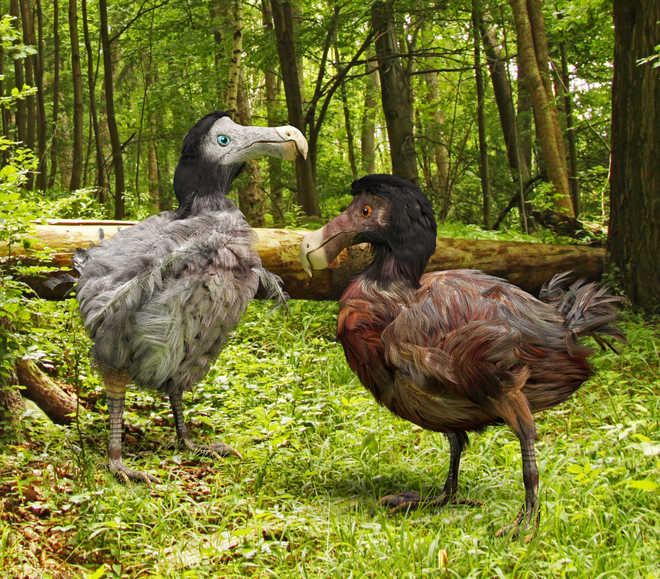Dodo, an extinct bird whose name has entered popular parlance as a symbol of stupidity, was actually quite intelligent, new research suggests.
The overall size of the dodo's brain in relation to its body size was on par with its closest living relatives: Pigeons — birds whose ability to be trained implies a moderate level of intelligence. "It is not impressively large or impressively small — it's exactly the size you would predict it to be for its body size," said lead author Eugenia Gold from Stony Brook University in New York. "So, if you take brain size as a proxy for intelligence, dodos probably had a similar intelligence level to pigeons. Of course, there's more to intelligence than just overall brain size, but this gives us a basic measure," Gold noted. The researchers also discovered that the dodo had an enlarged olfactory bulb — the part of the brain responsible for smelling — an uncharacteristic trait for birds, which usually concentrate their brainpower into eyesight. The study was published in the Zoological Journal of the Linnean Society.
The dodo (Raphus cucullatus) was a large, flightless bird that lived on the island of Mauritius in the Indian Ocean. They were last seen in 1662. "When the island was discovered in the late 1500s, the dodos living there had no fear of humans and they were herded onto boats and used as fresh meat for sailors," Gold pointed out. "Because of that behaviour and invasive species that were introduced to the island, they disappeared in less than 100 years after humans arrived. I think that's why we have given them this reputation of being dumb," she explained.
Even though the birds have become an example of oddity, obsolescence, stupidity, and extinction, and have been featured in popular stories ranging from Alice in Wonderland to Ice Age, most aspects of the dodo's biology are still unknown. — IANS
Male gorillas ‘sing’ and ‘hum’ during supper
German researchers have found that gorillas, well-known for their booming and chest-beating roars, also 'sing' and 'hum' frequently while eating food. This behaviour is more prevalent among adult males than their female or younger counterparts, the findings showed. Singing' and humming' was observed more frequently in association with food, especially while eating aquatic vegetation, flowers, and seeds.
The researchers believe that the calling linked with food could to be a means of expressing well-being. It could also aid in group coordination and social cohesion. For the study, published in the journal PLOS ONE, the researchers tracked two wild western lowland gorilla populations in the Republic of Congo, assessing only 20 gorillas in both the groups.
They recorded and analysed the 'singing' and 'humming' calls that gorillas of different ages and sexes produced in response to various foods.
Females and juveniles were quieter, perhaps to reduce these vulnerable individuals' risk of predation, the researchers pointed out adding that the findings provide new insight into the vocal abilities of gorillas.
"Similar to the function of food-calls in chimpanzees, gorillas may call to let their group mates know when it is time to finish eating," said one of the researchers Eva Maria Luef from Max Planck Institute for Ornithology, Germany.
"Silverback males may have to call more frequently since they are often the ones initiating changes in group activity," she added.
Many mammals and birds vocalise when finding or consuming certain foods. The phenomenon had been earlier studied in chimps and bonobos. — IANS
Unlock Exclusive Insights with The Tribune Premium
Take your experience further with Premium access.
Thought-provoking Opinions, Expert Analysis, In-depth Insights and other Member Only Benefits
Already a Member? Sign In Now










